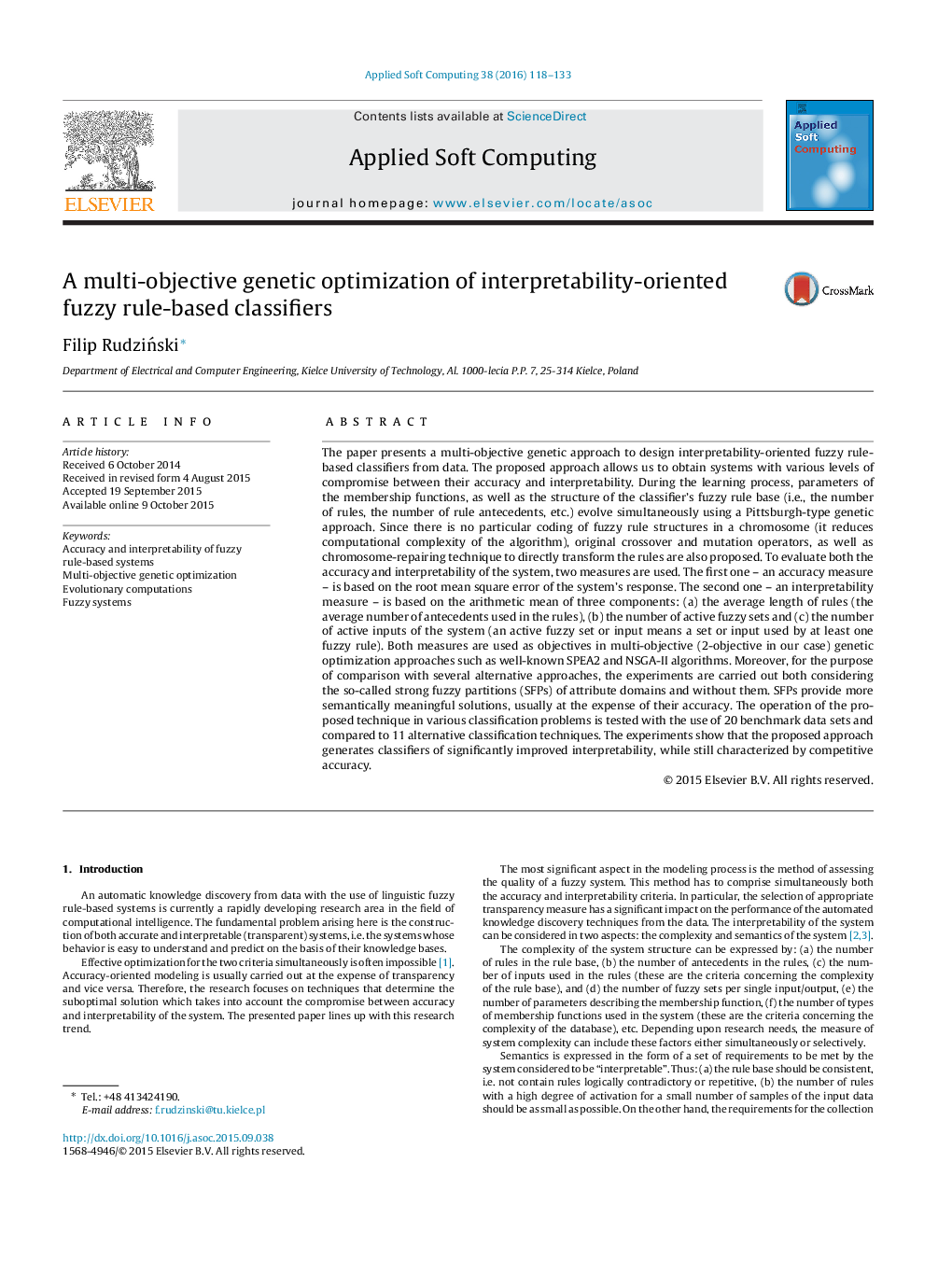| کد مقاله | کد نشریه | سال انتشار | مقاله انگلیسی | نسخه تمام متن |
|---|---|---|---|---|
| 494853 | 862809 | 2016 | 16 صفحه PDF | دانلود رایگان |
• The paper presents a multi-objective genetic approach to design interpretability-oriented fuzzy rule-based classifiers from data.
• The proposed approach allows us to obtain systems with various levels of compromise between their accuracy and interpretability.
• Original crossover and mutation operators, as well as chromosome-repairing technique to directly transform the rules are also proposed.
• The interpretability measure is based on the arithmetic mean of three components: the average length of rules, the number of active fuzzy sets, and the number of active inputs of the system.
• Effectiveness of the proposed technique in various classification problems is confirmed by experimental results.
The paper presents a multi-objective genetic approach to design interpretability-oriented fuzzy rule-based classifiers from data. The proposed approach allows us to obtain systems with various levels of compromise between their accuracy and interpretability. During the learning process, parameters of the membership functions, as well as the structure of the classifier's fuzzy rule base (i.e., the number of rules, the number of rule antecedents, etc.) evolve simultaneously using a Pittsburgh-type genetic approach. Since there is no particular coding of fuzzy rule structures in a chromosome (it reduces computational complexity of the algorithm), original crossover and mutation operators, as well as chromosome-repairing technique to directly transform the rules are also proposed. To evaluate both the accuracy and interpretability of the system, two measures are used. The first one – an accuracy measure – is based on the root mean square error of the system's response. The second one – an interpretability measure – is based on the arithmetic mean of three components: (a) the average length of rules (the average number of antecedents used in the rules), (b) the number of active fuzzy sets and (c) the number of active inputs of the system (an active fuzzy set or input means a set or input used by at least one fuzzy rule). Both measures are used as objectives in multi-objective (2-objective in our case) genetic optimization approaches such as well-known SPEA2 and NSGA-II algorithms. Moreover, for the purpose of comparison with several alternative approaches, the experiments are carried out both considering the so-called strong fuzzy partitions (SFPs) of attribute domains and without them. SFPs provide more semantically meaningful solutions, usually at the expense of their accuracy. The operation of the proposed technique in various classification problems is tested with the use of 20 benchmark data sets and compared to 11 alternative classification techniques. The experiments show that the proposed approach generates classifiers of significantly improved interpretability, while still characterized by competitive accuracy.
Figure optionsDownload as PowerPoint slide
Journal: Applied Soft Computing - Volume 38, January 2016, Pages 118–133
